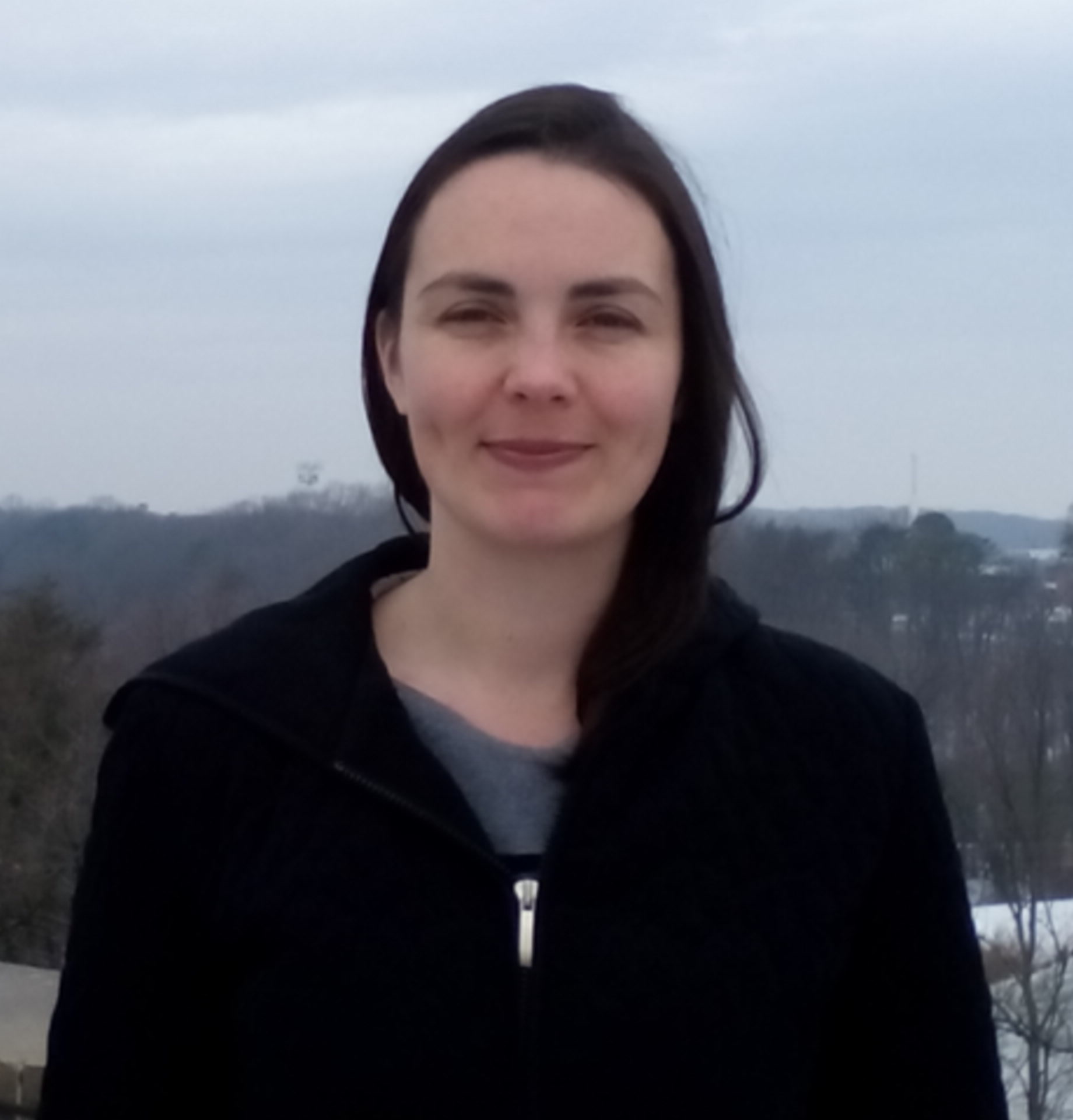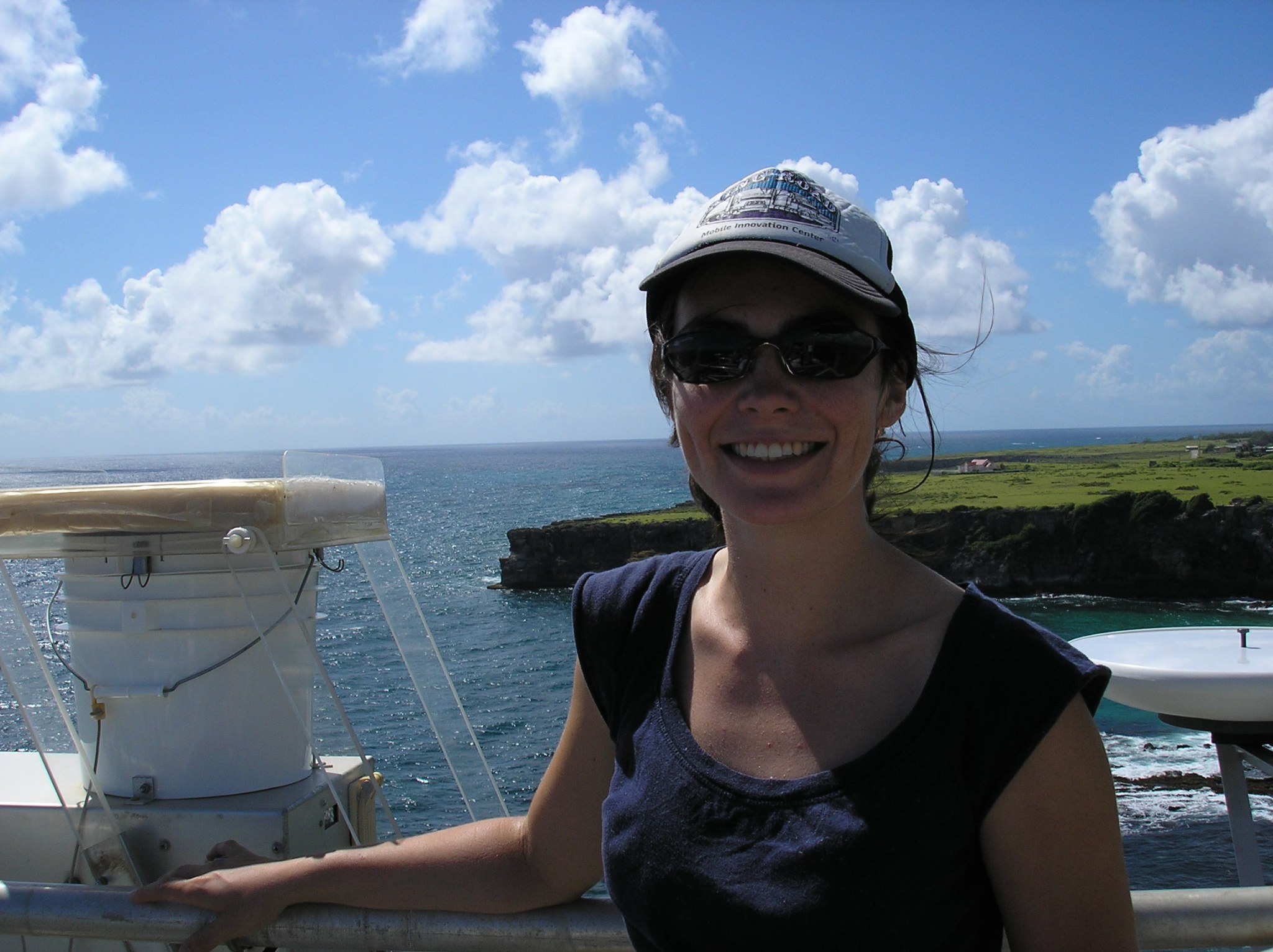Name: Lauren M. Zamora
Title: NASA postdoctoral program fellow advised by Dr. Ralph Kahn, Senior Research Scientist in Atmospheric Physics
Organization: Code 613, Climate and Radiation Laboratory, Earth Science Directorate
Atmospheric scientist Lauren M. Zamora will join about 70 Nobel Laureates and some 700 promising young researchers at the 65th Lindau Nobel Laureate meeting from June 28, 2015, to July 3, 2015, in Lindau, Germany.
What do you do and what is most interesting about your role here at Goddard? How do you help support Goddard’s mission?
I’m studying cloud-aerosol interactions. An aerosol is any small particle suspended in the atmosphere, such as dust, burning smoke, sea salt particles or pollen. I’m looking at how these particles affect cloud formation and especially cloud properties.
Cloud-aerosol interactions are some of the least understood aspects of the climate system, which is why I feel they are so important to study. I’m currently focusing on the Arctic because it is the region in the world most impacted by climate change. Because clouds significantly impact the heat budget in the Arctic, they indirectly have important environmental and economic consequences on sea level rise, general weather patterns, indigenous communities, fisheries, commerce and travel.
What got you interested in climate change?
There wasn’t any one particular moment, but I lived in Guadalajara, Mexico, as a child because my mother was, and remains, with the State Department, and she was posted there. The beauty of the area inspired me. I was saddened that the surrounding areas were not better protected. I wanted to do something to help preserve natural areas like those near Guadalajara. I wanted to be a good steward of the Earth.
My family later lived in Bonn, Germany, which, at the time, was the temporary capital after the country reunified.
What did you study to learn about climate change?
In 2004, I got a degree in environmental science and policy from the University of Maryland, College Park. Sophomore year I had a summer job literally watching grass grow. Among other things, I measured the height of the grass and the width of the base.
One semester during my junior year, I went to Brazil through Antioch College’s study abroad program. I studied different ecosystems throughout the country for two months. I then remained in Brazil another month to study dolphins with researchers from Joinville Regional University.
While at the University of Maryland, I was also a summer intern for Dr. Anne Thompson. We studied anthropogenic, or human-caused, changes relating to ozone. Dr. Thompson is one of the scientists who got me interested in atmospheric science.
A lot of people have a hard time in graduate school. I was one of them. Dr. Thompson’s mentoring was key to me finding my way and becoming successful. Ten years later, we are still in contact.
In 2010, I got a Ph.D. in marine and atmospheric chemistry from the University of Miami. While there, I studied the sources and biogeochemical impacts of atmospheric nutrient deposition. Basically, this means that I looked at aerosols falling into the ocean and bringing nutrients with them, fertilizing the ocean. Near the coast, the oceans receives nutrients from the nearby land, but farther out in the ocean, the nutrients from aerosols are much more critical for life.
I did part of my fieldwork in Miami and another part in Barbados. My father joked that I graduated from watching grass grow to collecting dust.
While in graduate school, I met and married my husband, who was born in Germany. He is a scientist too, a marine biologist, and we have even written one paper together.
Where did you do your first postdoctoral fellowship?
From 2010 to 2013, I conducted postdoctoral research at the GEOMAR Helmholtz Centre for Ocean Research Kiel in Kiel, Germany, one of the leading oceanographic centers in the world. I was interested in GEOMAR because one of my collaborators from my Ph.D. work was there and I wanted to pursue further collaborations with him on marine emissions of nitrous oxide, a global warming gas. Also, my husband and I wanted to spend some time with his family in Germany.
How did you come to work at Goddard?
After several years in Germany, I decided I wanted to pursue a topic with broader scope. I noticed an announcement for the NASA Postdoctoral Program position on the Earth Science Women’s Network and applied. I wrote a proposal to study how biomass burning smoke impacts clouds in the Arctic. My proposal was funded and I came to work for Dr. Ralph Kahn in February 2014.
So far it has been a great experience. Ralph is another of my mentors at Goddard who has smoothed the path for me through a combination of knowledge and kindness.
What foreign languages do you speak?
I learned Spanish while we lived in Mexico. I learned conversational Portuguese when I was in college. I learned some German when we lived there in the 1990s and then during my postdoctoral research in Germany. My husband was born and raised in Germany, so I hear German a lot at home when he speaks to our children.
How did you come to be selected to attend the 65th Lindau Nobel Laureate Meeting?
I am extremely honored to have been selected as a young researcher to attend the meeting.
My selection resulted from a two-stage nomination process. The organizers of the meeting, the Council for the Lindau Nobel Laureate Meetings and the Foundation Lindau Nobel Laureate Meetings, collaborate with national academic partners throughout the world, one of which is Oak Ridge Associated Universities (ORAU) which directly funds my fellowship at Goddard.
ORAU invited young researchers under 35 years of age to apply. Dr. Kahn wrote a letter of recommendation and those in charge of Goddard’s postdoctoral program also helped me navigate the process. ORAU nominated me to attend the meeting. Then the review panel of the Lindau Nobel Laureate Meetings and the Foundation Lindau Nobel Laureate Meetings reviewed the Oak Ridge nominees and selected me.
I’m one of just under 700 young scientists from around the world who will spend one week with approximately 70 Nobel laureates. I will be attending lectures by these laureates. There will be many opportunities to build networks and discuss potential future collaborations with other attendees. I was pleasantly surprised and honored when Dr. John Mather, a Nobel laureate and senior astrophysicist at Goddard, sent me a congratulatory email and offered to answer any questions I might have based on his experiences at two previous meetings. There have been many other very nice congratulatory emails and support from others at Goddard as well.
Dr. Mather shared the 2006 Nobel Prize in physics with George F. Smoot, of the University of California.
What was your reaction to being one of the very few selected young researchers to attend this prestigious meeting?
I’m tremendously excited! I expect it will be fun, thought-provoking, and a wonderful opportunity to learn new things.
What do you hope to accomplish at this meeting?
This is a once-in-a-lifetime opportunity to learn from people who have been among the most successful in the world in science. I want to ask them how them came up with their ideas, how they deal with setbacks, how they remain effective and what keeps them motivated. I hope maybe their answers can help me be a better scientist.
A main focus of the meeting is also collaboration. I look forward to encountering new ideas and contacts from other attendees in relevant adjacent fields.
It took you some time to decide what you want to do professionally. What advice would you give to those trying to decide what they want to do with their careers?
I’d say that there are two things to keep in mind. First, it can take a while to find out what kind of work you enjoy, are good at doing and feel is important. Second, at some point, it is good to stick with something if you want to get really good at it and make an impact. My recommendation is that if you think that a field might be right for you, try it as soon as you can. You will then have time to make adjustments to your selected field, but you’ll also have time to maximize your impact in the general field you eventually choose.
Who is your science hero?
My science hero is George Washington Carver, an amazingly prolific scientist and inventor who is most famous for discovering a hundred uses for peanuts. Despite being born a slave, his passion for science and his spirituality enabled him to become successful and give back to his community. His most important contributions improved the lives of many impoverished farmers in the South by enhancing nutrition, crop production and soil conservation.
He remained very spiritual man while being an innovative scientist. Here is my favorite quote from him: “I love to think of nature as an unlimited broadcasting station, through which God speaks to us every hour, if we will only tune in.”
What is your favorite activity outside of work?
I love spending time with my two daughters who are 3 and 1. I think every little kid is a scientist at heart because they are curious and they ask a lot of questions.
To read Lauren M. Zamora’s NASA Goddard biography referencing some of her publications, go to:
http://science.gsfc.nasa.gov/sed/index.cfm?fuseAction=people.jumpBio&iphonebookid=53794
Read more Conversations With Goddard
Also read about what our people do Outside Goddard
By Elizabeth M. Jarrell
NASA’s Goddard Space Flight Center



























